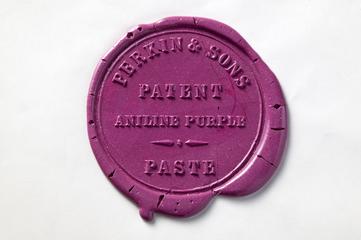
Perkin, Sir William Henry 1838 - 1907
- Nationality:
- British
Born on 12 March 1838 in Shadwell, London, Sir William Henry Perkin became known as the discoverer of a colour, and the founder of a massive industry.
Perkin's father, George Fowler Perkin, was a builder. Wishing his son to move up in the world, he had pushed him to become an architect. However, when William was twelve years old, a friend showed him how soda and alum crystallise, sparking his interest in chemistry. At the age of 14, Perkin began to attend the City of London School, then in Milk Street, off Cheapside. The school was virtually the only one in Britain to teach science as a practical subject. Perkin was taught chemistry and physics by Thomas Hall. Perkin’s progress in the subject led to him assisting Hall in setting up experiments for lectures. Hall knew the famous chemist August Wilhelm Hofmann, who ran the Royal College of Chemistry, and introduced Perkin to him. Perkin left the City of London School for the Royal College when he was 16. The College later became the Royal College of Science and, in 1907, it was one of the founding bodies of Imperial College.
At 17, Perkin became Hofmann's research assistant. He also worked in his basic laboratory at home during the evenings and at weekends. During the Easter vacation of 1856, Perkin made a substance which could dye silk a purple colour, which he named mauve. He had been trying to make quinine – then in demand as a treatment for malaria – by oxidising a salt of allyl toluidine using potassium dichromate. This experiment failed, but Perkin repeated the method using aniline instead of allyl toluidine and made a black precipitate. Rather than throw it away, Perkin tried to remove the colour and found that the resulting coloured solution dyed silk purple.
Perkin's discovery virtually created the coal tar industry. He had found a way to make dyes using aniline, a colourless aromatic oil derived from coal tar. Coal tar is a by-product of the gas industry. To manufacturers it was a waste product and they literally gave it away. Its only use was for waterproofing mackintoshes. Yet after Perkin's discovery, coal tar became the basis of saccharine production, the pharmaceutical industry, and the perfume industry.
Perkin decided not to return to college - an extremely important step given how difficult it was to make a living from such a discovery. He patented the dye on the 26 August 1856. He then left the Royal College of Chemistry to set up his own factory, manufacturing aniline dyes on a large scale. The move in Victorian fashion towards wearing mauve, led by Queen Victoria, assured Perkin of success, as he was the only person in Britain who could produce the colour in any quantity.
Perkin’s father and elder brother backed the original factory at Greenford Green, near Harrow, Middlesex. George Perkin’s building expertise meant that construction was rapid. Building began in late spring 1857, and by December of that year, the company started supplying mauve to silk dyers. Perkin went on to manufacture other aniline-based dyes and his company Perkin and Sons grew. In 1874, aged 36, Perkin sold the factory and retired from industry.
Perkin then built on his reputation as a chemist, continuing to research at home. He was secretary and president of the Chemistry Society. His sons were also very successful chemists. The eldest, William Henry Perkin junior, was professor of organic chemistry at Victoria University, Manchester and became Waynflete Professor of Chemistry at Oxford in 1912. The second son, Arthur George Perkin, began his career working for Hardman and Holden, an alizarin factory in Manchester. In 1916 he became professor of colour chemistry and dyeing at the University of Leeds. Frederick Mollwo, the third son, from Perkin's second marriage, also became an industrial chemist.
Perkin was knighted in 1906 and died at his home in Sudbury on 14 July 1907.